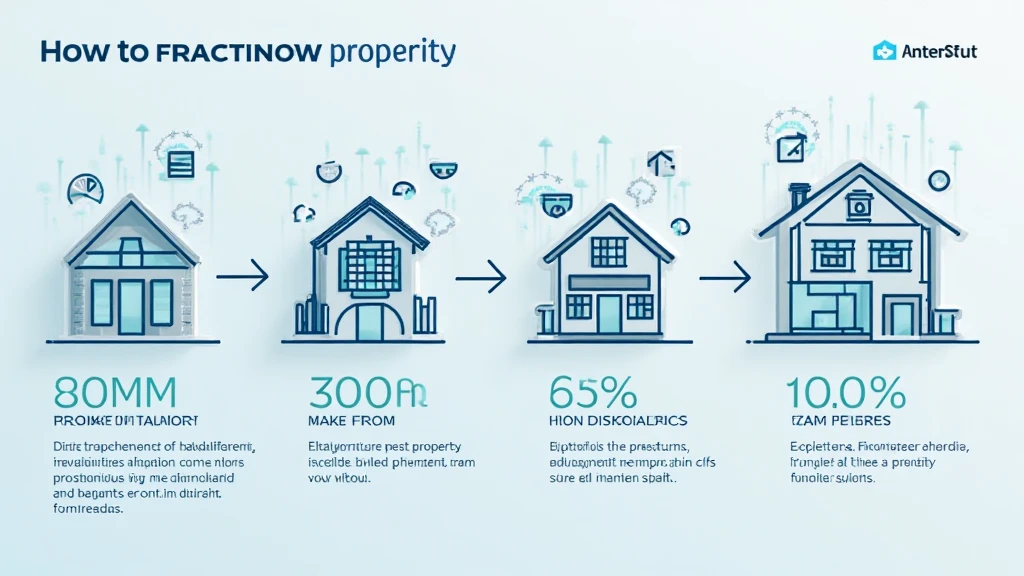Introduction
In today’s rapidly evolving financial landscape, fractional ownership is becoming increasingly popular, particularly in the context of real estate and personal property. According to a report from Statista, the global fractional ownership market is expected to reach $3.18 billion by 2025. With such growth, understanding how to fractionalize physical property opens up a world of investment possibilities. But, what does fractionalization mean, and how can blockchain technology facilitate this process?
What is Fractionalization of Physical Property?
Fractionalization refers to the process of dividing physical assets, such as real estate, art, or collectibles, into smaller, tradable shares. This makes high-value assets accessible to a broader range of investors. It’s similar to how mutual funds allow investors to own a piece of a diversified portfolio without having to buy entire stocks.
For example, let’s say you want to invest in a luxury vacation home that costs $2 million. Traditionally, this would be out of reach for most investors. However, by fractionalizing this property into 1,000 shares valued at $2,000 each, multiple investors can own a share of the property, allowing for shared benefits and profit distribution.

How Does Blockchain Facilitate Fractional Ownership?
Blockchain technology contributes to the fractional ownership process by ensuring transparency, security, and efficiency. Here’s how:
- Decentralization: The decentralized nature of blockchain reduces the need for intermediaries, lowering transaction costs.
- Smart Contracts: These self-executing contracts automate the terms of the agreement, ensuring compliance and reducing disputes.
- Enhanced Security: Each transaction on the blockchain is secure and immutable, minimizing the risk of fraud.
Real-Life Examples of Fractionalized Properties
Many innovative blockchain platforms have begun to facilitate fractional ownership. Here are a few notable examples:
- Real Estate Examples: Companies like Hibt.com allow investors to purchase fractional ownership shares in high-value real estate, ranging from commercial properties to vacation rentals.
- Art Investment: Platforms like Myco offer fractionalized shares in artworks, making it easier for individuals to invest in expensive pieces.
- Collectibles: CurioInvest enables users to invest in classic cars, giving them a stake in a luxury asset.
Legal Considerations for Fractional Ownership
When fractionalizing physical property, it’s crucial to understand the legal landscape:
- Compliance with Local Laws: Make sure the fractional ownership complies with property laws in your region, which may vary significantly.
- Structural Agreements: Create clear agreements that define ownership rights, profit-sharing, and responsibilities.
- Regulatory Approval: Depending on the jurisdiction, you may need regulatory approval to proceed with fractionalization.
Challenges and Risks of Fractionalizing Physical Property
While there are many benefits to fractional ownership, there are also challenges and risks to consider:
- Market Volatility: The value of fractional shares can fluctuate, affecting investment returns.
- Legal Complications: Navigating the regulatory landscape can be challenging, especially in emerging markets.
- Lack of Liquidity: Fractional shares may not always be easily tradable, posing a liquidity risk for investors.
Future Trends in Fractional Ownership
As technology continues to evolve, the future of fractional ownership looks promising. A notable trend is the increasing acceptance of digital assets within traditional financial markets. Many investors are already exploring 2025’s promising altcoins to diversify their portfolios further.
Additionally, fractional ownership is gaining traction in various sectors beyond real estate and art, including luxury watches and even classic cars.
Conclusion
In conclusion, how to fractionalize physical property effectively combines traditional investment methods with innovative blockchain technology. This approach not only democratizes access to high-value assets but also streamlines processes for all parties involved. As we continue to see growth in this sector, understanding the fundamentals can position you advantageously in the investment landscape.
Whether you are a seasoned investor or just starting, exploring fractional ownership could open doors to unprecedented opportunities and help you capitalize on the digital transformation occurring in finance. Stay informed with platforms like cryptobestnews, and keep an eye on emerging trends shaping the future of property investment.
Author: Dr. Jane Smith, a blockchain specialist with over 10 published papers and expertise in smart contract auditing.


